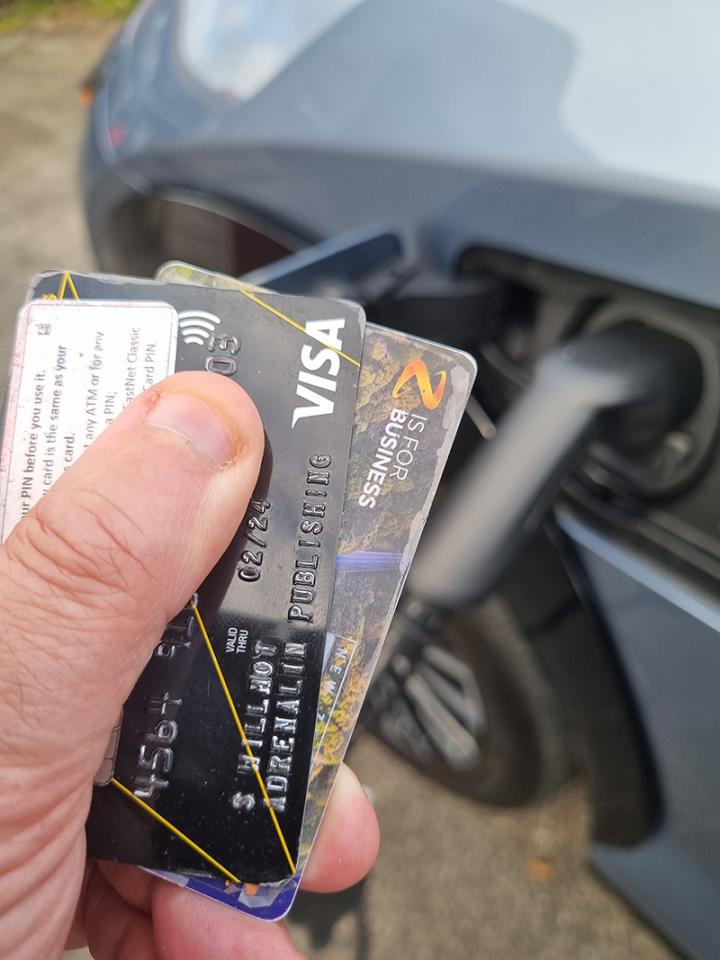I’m living for the day someone sends me an image of Tesla Supercharger Bay with a supercool Tesla charging up, flanked by a couple of old and crusty used import electrics.
Unfortunately, I think the premium price Tesla is asking its non-Tesla owners to pay is going to be too much for that, which is kind of a brickbat and bouquet to Tesla.
Thank you for opening the electric gates to other brands Tesla, but hey, not so cool loading a premium on the price they’ll pay over Tesla owners.
The excuse that higher costs are incurred to support charging a broad range of vehicles and adjustments to sites to accommodate those vehicles is lame at best – the charging equipment fits, or it doesn’t – and then adding in the insult that if a non-Tesla owner takes out a membership, the price of power goes down. Isn’t there a word for this? Oh yeah, protectionism.
So, what about the big fuel companies – sorry, energy companies I believe they like to be called these days. Well, Z seems to have the right idea. It’s charging sites – more than one in Auckland – have fast 50kW or ultra-fast 180kW chargers, which equates to 100kms travel in either 13 or eight minutes on average.
More critically perhaps is the pricing. Z has opted to go for a flat rate of 69 cents per kWh with no additional time-based fees applying. And I don’t have to drive a Z car (how many of you remember those?).
BP also has BP Charge, a rollout of 75kW chargers being amped up to 150kW chargers. Again, compatible with most vehicles, the chargers use CCS2 or CHAdeMO plugs. BP Charge doesn’t hold itself to charge times, but experience suggests they would be on a par with Z’s.
BP is open about the fact that its chargers use power from the national grid, but it is looking at renewable energy generation for every kW of electricity used. Pricing is set for the moment at 70 cents per kWh from the company’s 75kW chargers.
Where both Z and BP have fallen over a little is in respect of their payment options. OK, it’s not a deal-breaker, but you have to use either the respective app (no problems there, the apps are both very useful in other areas and user-friendly), but they have to be tied to a credit card, debit card or Google Pay or PayPal.
This is fine for the general public, but what about corporates? Z Business card holders and I assume BP card holders, can’t use their ‘this-is-not-my-account-to-sort-out-it’s the-company’s’ card to pay for electric go-juice.
Seems to me to be a bit of an oversight to not have this infrastructure in place ahead of the chargers, but Z is apparently working on it with a roll out for early 2024 and BP, probably the same.
Most EV users will be familiar with the term ‘snacking.’ This is when you drive your fully charged EV from home or work and you stop to charge it before it hits the big E erm, 0 per cent.
You might snack after you’ve done your average 40km per day or you might leave it for a few days if you don’t want to sit in the car parks we laughingly refer to as highways.
Regardless, you’ll want to look at a wallbox either at home, at work or both, and this will give you greater control over what you’ll be paying elsewhere.
For the private EV user, the wallbox is a no-brainer. For the corporate user, yeah, it gets a little tricky as to who pays for what, but any wallbox supplier will be able to best advise on your specific situation.
This is what I comment on most vociferously when it comes to electric vehicles; we are still – infrastructurally-speaking – a long way off making electrics as convenient to use as ICE vehicles, and I am still waiting for the EV that can go 1000 (real) kms before having to refu-sorry, recharge.
In the meantime, I’ll keep using recycled dinosaur juice to run my less-and-less-efficient-as-time- goes-on motorcycles, so be nice, that might be me on that two-wheeler reducing road congestion and damage to the tarmac!



